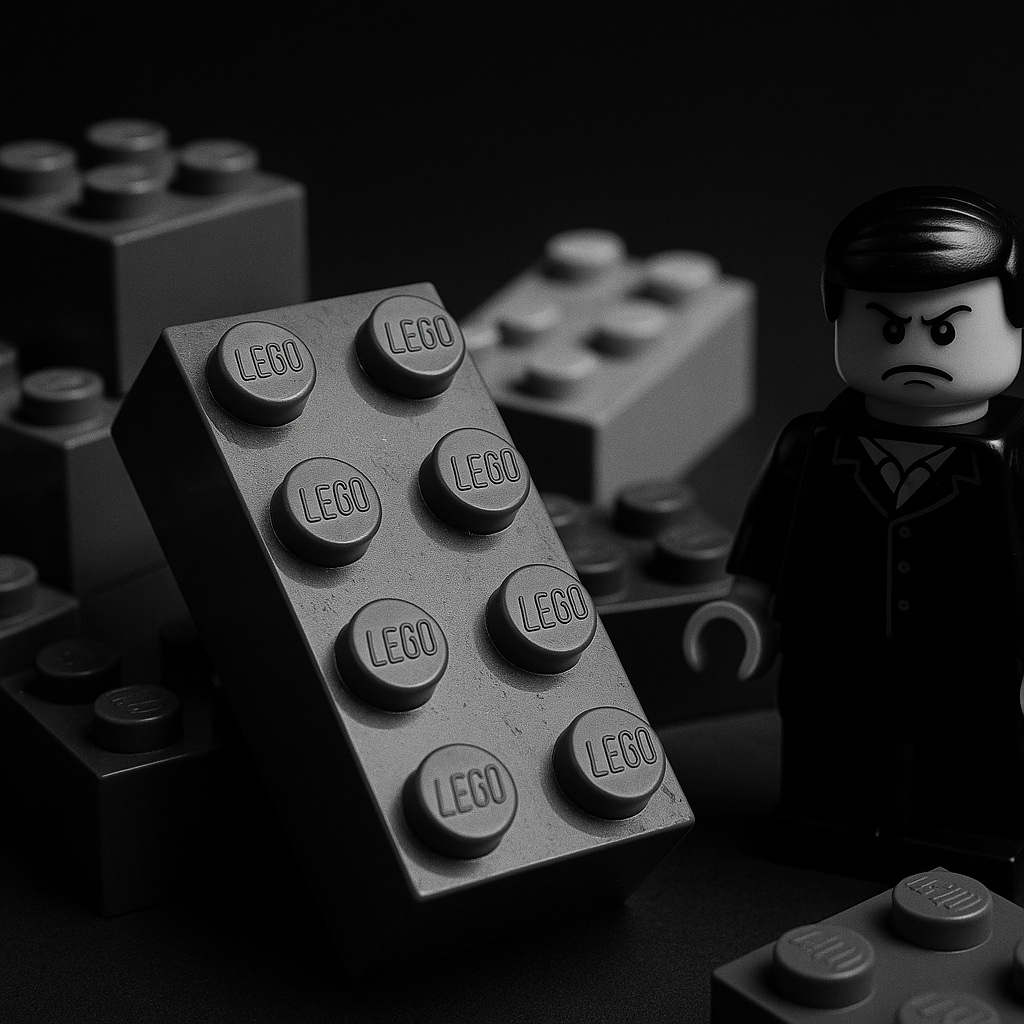
The LEGO empire: innovation, monopoly, and the price of control
by Kai Ochsen
LEGO is synonymous with creativity, learning, and engineering. For millions of children, educators, and hobbyists, it's more than just a toy, it's a gateway to STEM, problem-solving, and imagination. But behind the cheerful colors and modular bricks lies a far more complex, and controversial, reality. LEGO is not only a cultural icon, it's also a corporate giant that has, for decades, exerted an aggressive grip over the educational and public procurement markets. And, much like other tech monopolies, LEGO's control has often come not through innovation, but through litigation, lobbying, and influence.
From toy to infrastructure: how LEGO captured the education market
Walk into any robotics classroom or STEM-based curriculum today, and you're likely to find LEGO Mindstorms or LEGO Education kits. Governments, particularly in Europe and the U.S., have poured funding into school programs that center around LEGO-based learning.
But why LEGO? Why not Arduino, Raspberry Pi, or the countless open hardware kits designed for education?
The answer isn't purely pedagogical, it's political and commercial. LEGO has secured its position in schools not through pedagogical superiority, but by:
Winning exclusive public tenders
Aggressively marketing to ministries of education
Building partnerships with official educational institutions
Offering training and support programs that effectively lock institutions into their ecosystem
This has created a de facto monopoly, where public schools and government-funded institutions can't choose more affordable, open-source alternatives, even when those alternatives are better suited to real-world applications.
Suing innovation: the case of TENTE
To truly understand LEGO’s corporate tactics, one must revisit its history of litigation, particularly the case of TENTE.
In the 1980s, TENTE, a Spanish construction toy brand, offered a superior and more technically advanced building system than LEGO. TENTE sets featured:
Rotating wheels with realistic axles
Modular parts suited for realistic vehicle design
Unique stud designs with central holes
Kits aimed at older children and hobbyists
While LEGO was focused on colorful bricks for toddlers, TENTE was pioneering the kind of technical precision and modularity that LEGO would only begin to embrace years later with its Technic and Creator Expert lines.
Rather than improve their offerings, LEGO sued TENTE for alleged patent infringement. The claim was dubious: TENTE’s brick design and connection system were markedly different. But the lawsuit dragged on, draining TENTE’s resources. In 1993, TENTE’s parent company EXIN collapsed, and with it, a worthy LEGO rival disappeared.
LEGO didn’t win through superiority. It won through legal attrition.
The modern face of monopoly
The TENTE saga is a blueprint LEGO still follows, only now, the battlefield is digital and institutional.
Mindstorms and LEGO Education kits are locked ecosystems, with proprietary software, sensors, and hardware.
Alternative STEM kits that promote real-world coding, electronics, and fabrication are priced out or ignored in tenders.
Open source and modular kits like Arduino or micro:bit struggle to gain traction in classrooms because educators are already trained and invested in LEGO’s pedagogy.
It’s the classic case of vendor lock-in. What Microsoft did to operating systems and productivity software, LEGO has done to STEM education.
Innovation through others
Even LEGO’s modern tools are often inspired by what others have done better:
Their spike kits resemble modular, open electronics platforms.
Their coding environments borrow heavily from tools like Scratch, Arduino IDE, and Blockly.
And despite being widely hailed as a leader in educational robotics, LEGO’s kits rarely offer compatibility with industry-grade programming languages or hardware.
Meanwhile, competitors with truly innovative and open tools struggle for visibility.
Lessons from Open Source and other monopolies
The story of LEGO is part of a broader pattern we’ve seen in open-source software and hardware:
RedHat, once an open-source darling, was bought by IBM and shifted to enterprise-locked offerings
OpenOffice, after being acquired by Oracle, lost its edge and only survived thanks to the forked LibreOffice
Countless Arduino-based platforms are eclipsed by closed, more marketable kits
Even in the 3D printing world, companies like Prusa Research have followed similar paths. What began as an open-source, community-driven movement has turned into an insulated, ego-driven ecosystem. Meanwhile, newcomers like Bambu Lab leap ahead with practical innovation, multicolor printing, better software, faster systems, and eat into their market share. The pattern repeats: innovators get punished. Marketers get rewarded. And monopolists crush the rest.
It’s easy to say that LEGO is "just better" or "easier for kids," but that comfort has a cost:
Higher prices for schools and governments
Lost opportunities for students to learn with real-world tools
Suppression of smaller, potentially more innovative companies
Educational systems molded around corporate limitations rather than possibilities
When a single company becomes the gateway to learning, education is no longer neutral. It's branded.
What can be done?
Educators, parents, and governments must begin asking harder questions:
Are we adopting LEGO because it's the best tool, or because it's the only one we've heard of?
Are we exposing students to open platforms and real-world systems, or just locking them into branded toys?
Are we funding innovation, or funding corporate control?
Final take: the brick wall
LEGO may build dreams, but it has also built walls, legal, economic, and institutional. It's time to critically assess not just what LEGO offers, but what it prevents. Education should not be dictated by a toy company, no matter how colorful or well-meaning its image.
True learning requires choice, openness, and access, not vendor lock-in. If we want the next generation to build a better world, we must give them more than one kind of brick.